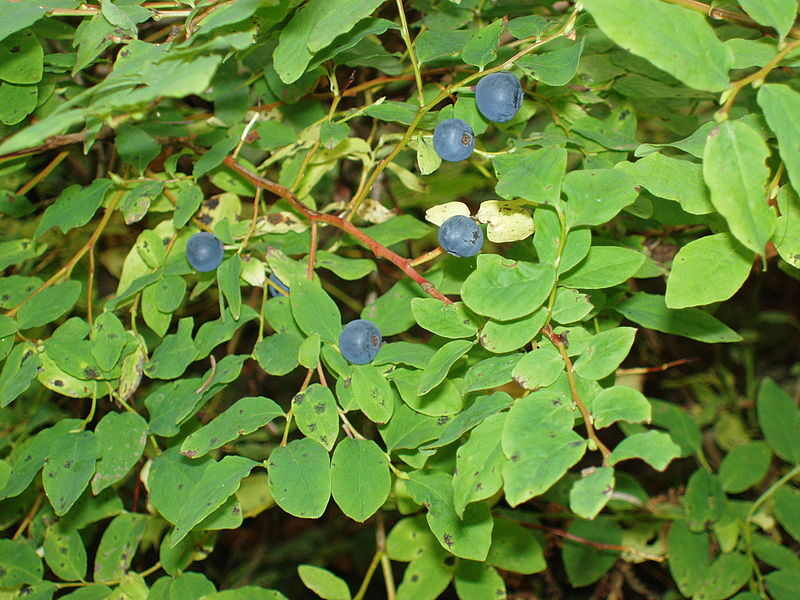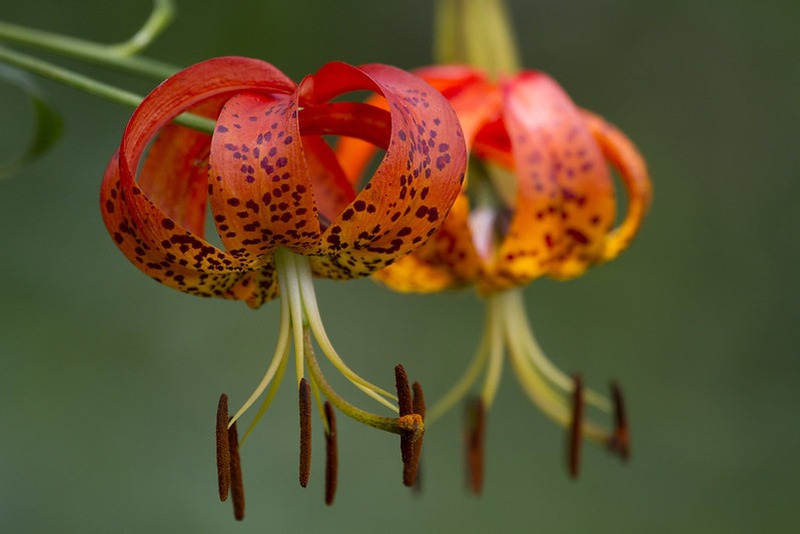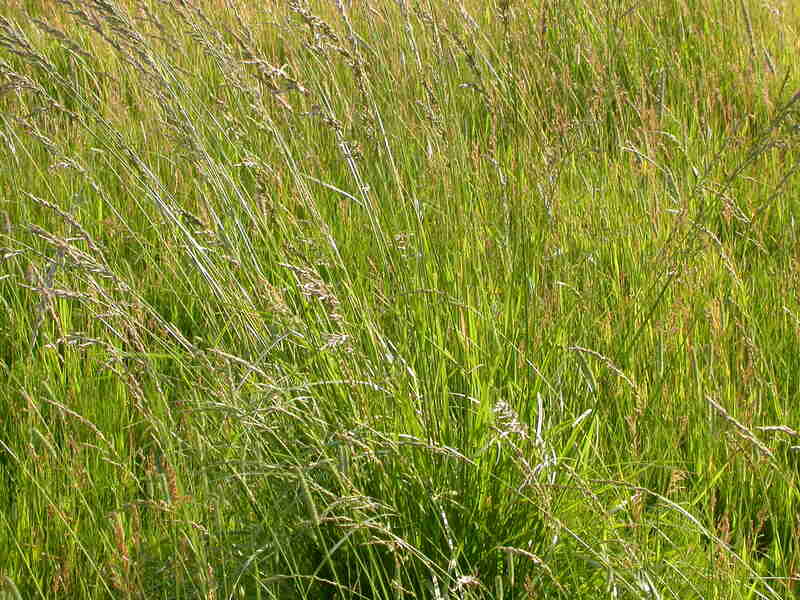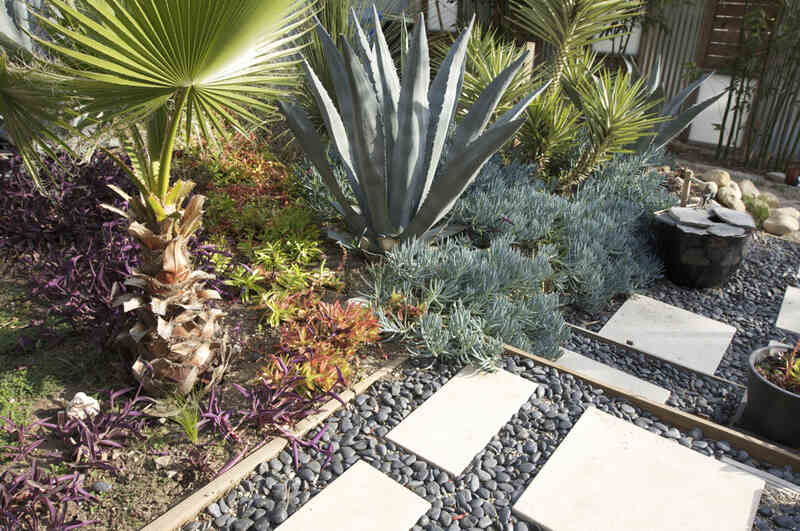11 Low-Maintenance Landscaping Ideas for Western Carolina
BY JUDITH GALLOVA | MAY 4TH, 2023 | LAWN CARE, NORTH CAROLINA
Western Carolina has ample natural beauty. Its mountains, high elevation, and variety of plant life set it apart from the rest of the Carolinas, so it’s essential that you know how to care for your yard in this unique climate.
Adding turf grass, plants, and various other features to your property can be daunting at first. But don’t worry; there are plenty of tips and tricks to not only make your Western Carolina landscape beautiful but also easier to care for.
Here are 11 low-maintenance landscaping ideas for Western Carolina.
In this article:
- Native Plants
- Wildflowers
- Herbs
- Perennials
- Evergreens
- Ground Covers
- Low-Maintenance Grass Types
- Mulching
- Rain Gardens
- Xeriscaping
- Hardscaping
1. Go Natural with Native Plants

Photo Credit: Ryjial Christianson / Wikimedia Commons / CC BY-SA 3.0
There are a lot of native plants in Western Carolina that do well in the local climate and soil. This makes them easier to care for. In addition, native plants provide important habitat and food sources for wildlife, making them an eco-friendly choice for landscaping.
Because the variety of Western Carolina’s natives is so vast, make sure that you research which plants are best suited to your needs and preferences. Consider factors like sunlight needs, maintenance needs, potential hazards, and so forth.
Advantages of native plants:
- They need less watering.
- They provide a habitat for beneficial insects and wildlife.
- Their deep roots prevent erosion and runoff.
- They promote biodiversity.
- They look great.
Some plants native to Western Carolina:
- Blueberry
- Green-and-gold
- Rhododendron
- Lady fern
- Mountain stonecrop
- Mountain laurel
- Creeping phlox
- Passionflower
If you’d rather plant a tree, consider:
- Red spruce
- Dogwood
- Bitternut hickory
- River birch
- Sycamore
- Tulip tree
- Red maple
- Chestnut oak
- Eastern hemlock
Estimated cost: The price of your plants depends on their type and size. A new flower bed costs $1,000 to $3,000, and a new shrub costs $25 to $60 per plant, although large shrubs can cost up to $350. Tree prices typically range between $150 and $1,850 per tree but can cost as much as $3,335.
2. Create a Vibrant Garden with Wildflowers
Wildflowers grow in poor soil without any surplus irrigation or fertilizer. Just think about how much work you can save by letting these plants do their own thing and thrive. Plus, reducing your chemical usage is good for wildlife and the environment.
A wildflower meadow can grow within 2 to 3 years. It can also attract pollinators and birds to your yard.
Advantages of wildflowers:
- They don’t need fertilizer.
- They don’t need to be watered once they’re established.
- They promote biodiversity, provide a habitat for wildlife, and attract pollinators and birds.
- They improve soil health, prevent erosion, and improve water quality.
- They add beautiful colors and textures.
Examples of wildflowers:
- Black cohosh
- Wild Columbine
- Late purple aster
- Jack-in-the-pulpit
- Purple coneflower
- Cardinal flower
- Fire pink
Cost: Wildflower seed mixes (mixes of wildflowers and healthy native grasses) cost $60 to $80 per 1,000 square feet. Their professional installation runs $750 to $2,500 for a typical quarter-acre lawn, depending on the preparation needed.
3. Add Some Flavor by Planting Herbs
Fresh herbs enhance food flavor and often have various health benefits, and many of them are a good fit for your Western Carolina garden. And although most herbs aren’t native to Western Carolina, they’re popular; the largest herb festival in the U.S. is actually held in Asheville.
Herbs are often native to Mediterranean regions, so they may be able to resist heat and drought. However, make sure that you check the plant’s cold hardiness to be sure it also withstands cold weather.
Advantages of herbs:
- They add fresh flavor to your dinner table; and save money on grocery store spices.
- They’re aromatic.
- Many herbs don’t need to be fertilized.
- They’re often drought-resistant.
Examples of cold-hardy herbs:
- Oregano
- Sage
- Parsley
- Mint
- Thyme
Cost: Most small potted herbs cost $3 to $15 per plant. If you want to grow herbs from seed, a packet of seeds costs $1 to $3, and a herb garden starter kit ranges from $20 to $45.
4. Want Annual Beauty? Plant Perennials

Photo Credit: Shenandoah National Park / Flickr / Public Domain
If you don’t want to replace your flowers every year, consider perennials. These plants come back year after year, making them a great investment for any garden. With proper care, they can provide beautiful blooms for many seasons to come.
True, annuals typically have more vibrant, longer-lasting blossoms, so the best thing to do is to mix perennials and annuals in your garden. Be sure to research various plants and their characteristics to better understand which ones are right for you.
Benefits of perennial plants:
- They don’t need to be replaced as often.
- They can last a number of years.
- They don’t need as many chemical treatments.
- Erosion and drought resistance due to deeper and denser roots.
Examples of perennial plants for Western North Carolina:
- Huckleberry
- Turk’s cap lily
- Robin’s plantain
- Moss phlox
- Virginia creeper
- Spicebush
Estimated cost: The cost varies based on the type and size. To give you some approximate figures, plants usually cost $2.50 to $60 per plant, if you plant them yourself, but some plants can cost up to $100. Shrubs typically cost between $25 and $60 per shrub. Large shrubs may cost up to $350. Trees usually cost between $150 and $1,850 per tree, but some trees can cost up to $3,335.
5. Stay Green with Evergreens
Just because most trees and plants go to sleep during the winter doesn’t mean all of yours have to. You can keep your yard vibrant during the colder months by planting evergreens and “winter interest” plants.
Evergreen trees’ and “winter interest” plants’ lasting foliage isn’t their only advantage. They have numerous other benefits as well, which makes them a great option for your low-maintenance Western Carolina yard. There are various evergreen and “winter interest” plants out there, so make sure you look into which ones can work for you for your local climate.
Advantages of evergreens and “winter interest” plants:
- They improve air quality.
- They can brighten up your lawn in winter.
- They offer wildlife food and habitat when little of it is available.
In addition, evergreens also have the following advantages:
- Many evergreens need less care than other plants
- The right evergreens can improve privacy
- They can save energy by blocking wind and sunlight
Examples of “winter interest” plants:
- Lenten rose
- Winter daphne
- Paperbark maple
- Fantasy crape myrtle
- Camelias
- Leatherleaf mahonia
- Winter honeysuckle
Evergreen trees that thrive in Western Carolina:
- White Pine
- American Holly
- Hemlocks
Cost: Prices range from $20 to $3,335, depending on the plant’s size, species, and maturity. Small flowering winter interest plants range from $20 to $35; a new shrub costs $25 to $60 per shrub (although large shrubs can cost up to $350); and small trees range from $100 to $600. Larger trees usually cost between $150 and $1,850 per tree, but some can cost up to $3,335 per tree.
6. Try Ground Cover “Turf”
Taking care of your turf can be a lot of work. If you want an easy-care alternative that gives the same dense, green appeal, why not try ground covers instead? Ground covers are low-growing plants that spread quickly and cover large areas of ground, reducing the need for mowing, overseeding and watering.
As with any other plant, make sure that the ground cover you choose fits your needs and preferences. You should make sure it matches your hardiness zone, and that you know all about its characteristics, such as shade tolerance and potential hazards.
Advantages of ground covers:
- They’re easier to maintain than turfgrass.
- Their risks for diseases are lower.
- They prevent weed growth.
- They prevent erosion and stabilize the soil.
- Some don’t need chemical treatments such as fertilizer, herbicide, or pesticide.
- They can look great in your yard.
Examples of ground covers include:
- Partridgeberry
- Golden ragwort
- Alumroot
- Foamflower
Estimated cost: On average, the cost of ground covers ranges from $10 to $25 per square foot without installation.
7. If Picking a Grass, Choose a Low-Maintenance Option

Photo Credit: Matt Lavin / Flickr / CC BY-SA 2.0
While you can use ground covers to give your lawn a similar appeal, they can’t quite replace the natural look and feel of grass. But not all grass types are the same.
Low-maintenance grass types can help you save time and money on watering, mowing, and other lawn care. So make sure you do your research to find the one that’s right for you. You can start by checking out our recommended grass types for Asheville.
Advantages of a low-maintenance grass type:
- The require less lawn maintenance.
- They have great curb appeal.
Examples of low-maintenance grass types:
Estimated cost: Professional grass removal typically costs $1.50 per square foot. Professional lawn seeding typically costs between $0.10 and $0.19 per square foot.
8. Keep Your Plants Healthy with Mulch
If you want to keep your plants healthy with minimal effort, you should try mulching. Mulching is an easy and cost-effective way to retain moisture in your plants and protect them from damaging temperatures. It also prevents weeds and improves soil quality.
You can pick between organic and inorganic mulch. As the name suggests, organic mulch is made from natural materials. It decomposes over time and releases nutrients into the soil. On the other hand, inorganic mulch doesn’t provide nutrients for your soil, but you don’t need to worry about it decomposing and replacing it as often as organic mulch.
Advantages of mulch:
- It prevents evaporation and retains soil moisture.
- It insulates soil to prevent sudden temperature shifts.
- It prevents erosion.
- It helps to control weeds.
- It protects plants from soil-borne diseases.
- It stops polluted runoff from mixing with aquatic ecosystems.
- It improves soil quality.
- It is visually appealing.
Organic mulch needs to be regularly replaced, but it has other advantages:
- It gives plant roots a nutrient boost.
- It attracts beneficial microorganisms and earthworms.
Examples of organic mulch:
- Grain straw
- Wood shavings
- Tree leaves
- Grass clippings
Examples of inorganic mulch:
- Rubber mulch
- Crushed seashells
- Gravel
Estimated cost: Mulching typically costs around $85 per cubic yard. A cubic yard will cover about 100 square feet at three inches deep.
9. Conserve Water by Building a Rain Garden
Isn’t it a shame for rainwater to go to waste? We think so. If you agree, consider building a rain garden. Rain gardens are essentially basin-formed gardens designed to collect and absorb rainwater, allowing it to filter into the ground instead of running off into storm drains and contributing to water pollution.
Captured rainwater can be used to irrigate your garden or even reduce the amount of runoff that enters local waterways. Plus, rain gardens can be beautiful additions to your landscape, providing habitat for wildlife and reducing erosion.
Advantages of rain gardens:
- They recharge groundwater and help to conserve local water supply.
- They filter water from harmful chemicals.
- They reduce runoff and erosion.
- They increase soil moisture.
- They increase the value of your property.
- They protect fish and turtles from thermal shock.
- They promote biodiversity, provide a habitat for native wildlife and attract pollinators and birds.
- The flowers in your rain garden can add curb appeal.
What you can put in your rain garden:
- Permeable soil
- Deep-rooted native plants
- Perennials
- Shrubs
- Wildflowers
- Rocks
Cost: Installing a rain garden yourself costs between $3 to $5 per square foot, depending on the type of plants and materials you use. A typical rain garden is 150 to 400 square feet, so expect to pay between $450 and $2,000. Professional installation ranges from $10 and $15 per square foot.
10. Want to Water Even Less? Try Xeriscaping

Photo Credit: Jeremy Levine / Flickr / CC BY 2.0
Xeriscaping is another landscaping technique that’s used to save water. Not only can it create a low-maintenance and sustainable garden, but it can also reduce water bills and help conserve natural resources.
If xeriscaping your entire yard feels overwhelming, you can start little by little. You can then gradually convert more areas of your yard to xeriscaping, such as by replacing thirsty plants with drought-resistant ones or installing a drip irrigation system.
Advantages of xeriscaping:
- It’s eco-friendly.
- It needs fewer chemical treatments (fertilizers and pesticides).
- It can increase property value.
- It attracts pollinators and birds.
- It reduces or eliminates mowing (if you replace turfgrass with an alternative).
Ways you can start xeriscaping:
- Plant only drought-resistant plants.
- Use hardscapes to take up some of your yard space.
- Use organic matter and mulch to keep your soil hydrated.
- Learn to hydrazone (i.e., group plants together based on their water needs).
- If you need to irrigate, install efficient irrigation, like drip irrigation or sprinklers with a rain sensor.
- Limit how much turfgrass you use (replace it with ground covers if possible).
- If you need to use turfgrass, choose a drought-tolerant grass type.
Estimated cost: There are various xeriscaping methods, which vary in cost. On average, xeriscaping may cost between $5 and $20 per square foot.
11. For Functionality and Low-Maintenance, Add Some Hardscapes
If you want a beautiful landscape, it’s going to be hard to create one without greenery. But on the other hand, that doesn’t mean there’s no room for functional hardscapes, too. To reduce some of your lawn and garden maintenance tasks and make your outdoor space easier to take care of, hardscapes are a great idea.
Moreover, hardscaping features can also add value to your home with their aesthetic appeal, and give you a practical place to spend time with loved ones.
Advantages of hardscapes:
- They need less maintenance.
- They can create a practical space.
- They can be long-lasting.
- They don’t need chemicals like fertilizer, pesticides, herbicides, and fungicides.
- They can help even out areas of your yard.
- They can increase your property value.
Examples of hardscapes:
- Water features
- Fences
- Outdoor kitchens
- Rock gardens
- Fire pits
- Walkways
- Decks
- Patios
- Gazebos
Estimated cost: There are various hardscaping projects, so it depends on which ones you choose. But you can expect to pay $2,200 to $6,500 for a patio; $3,900 to $10,500 for a deck; $2,100 to $6,000 for a pergola; $1,100 to $7,500 for a water feature; $250 to $2,200 for a fire pit; $60 to $170 per ton for river rocks; and between $3 and $30 per square foot for stone pavers, depending on the type of stone.
Final Thoughts
The thought of maintaining a beautiful outdoor space can be intimidating. However, you can create an aesthetic outdoor space that’s easier to care for than you’d think.
Start by getting some native wildflowers or evergreens and then continue adding low-maintenance features to your landscape over time. When picking plants, make sure you learn about their needs and see which ones are a good fit. Don’t forget to research their important characteristics, such as their shade tolerance, potential hazards, and so forth.
As you already know, no lawn can be completely maintenance-free. If you want help checking off your to-do list tasks, call a lawn care pro in your area.
Main Image Credit: Joe Wolf / Flickr / CC BY-ND 2.0